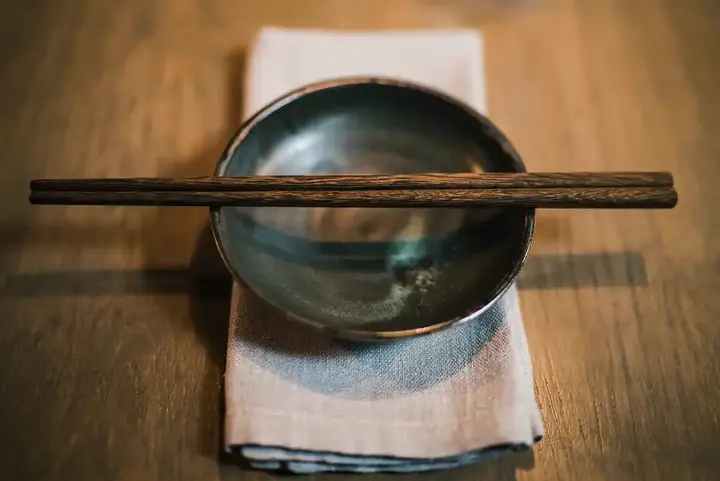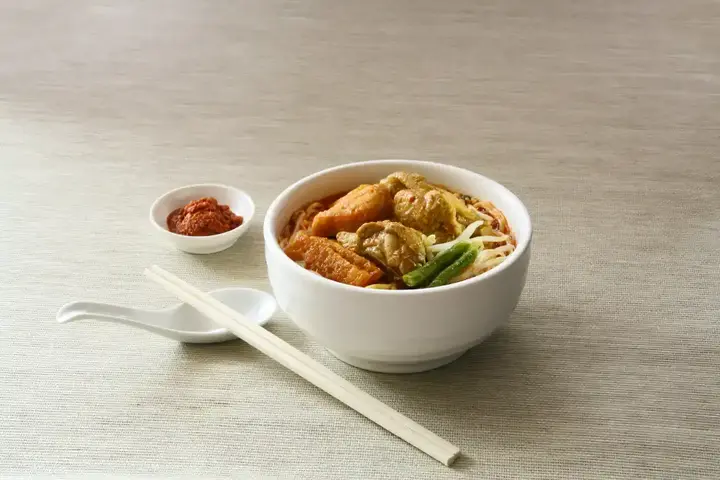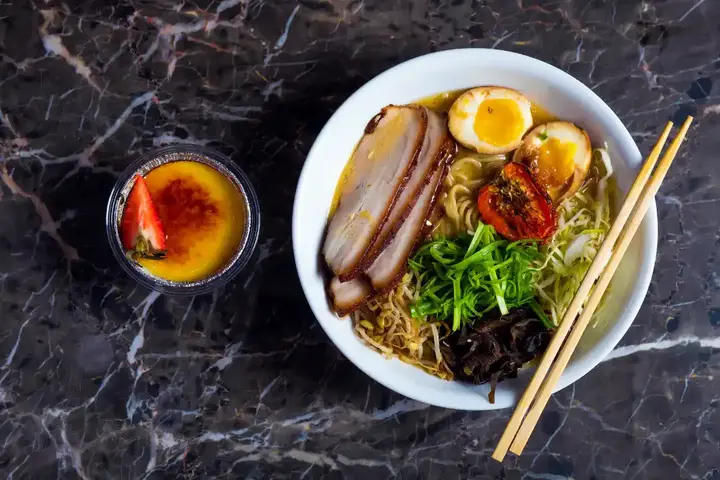The untold history of chopsticks

Chopsticks are an essential tool when it comes to eating Asian food.
Show key points
- Chopsticks originated over 5,000 years ago in China, initially used as cooking tools made from thin twigs.
- Due to resource shortages in ancient China, people began cutting food into smaller pieces, which led to the widespread use of chopsticks for eating.
- The influence of Confucian teachings discouraged the use of knives at the table, contributing to the popularity of blunt-edged chopsticks in China.
- ADVERTISEMENT
- Various Asian countries like Japan, Korea, and Vietnam adopted chopsticks and developed unique styles and materials for their versions.
- Throughout history, myths have surrounded chopsticks, including the belief that silver ones could detect poison or that their use influenced personal fortune.
- Japan is renowned for its handcrafted and beautifully designed chopsticks, such as the Wakasa Nuribashi, which have been produced since before the Edo period.
- Aside from cultural significance, using chopsticks may offer health benefits by enhancing brain function through the coordination of multiple muscles.
For some, these sticks are easy to use, but for others, it is challenging.
It is a well-known fact that chopsticks originated in Asia but do you know where and why?
These modest alternatives to forks and knives have been around for generations, but how did they become an essential tool in Asia?
In this article, we will explore the unexpected and untold history of chopsticks.
The first evidence of chopsticks.

Chopsticks were invented more than 5,000 years ago in China and had a humble beginning by using them as cooking utensils.
The first form of chopsticks is believed to have been used in China and was made of wood.
It is also believed that the original chopsticks were thin twigs used to pick up food from the cooking pot.
Recommend
But as creative cooking has evolved and fried foods have become more popular, the material of chopsticks has changed.
Evidence of this has been found in the ruins of Yin in Henan Province, which is famous as the site of the discovery of the earliest examples of Chinese writing and also home to the first known metal chopsticks for dining, where sets of bronze chopsticks were found in tombs at the site.
The benefit of using metal chopsticks was the ability to reach deep into boiling water and oil containers.
Use chopsticks.

Around 400 AD, people started eating with chopsticks.
There were shortages of food and fuel in China due to the population boom, so chefs had to be creative with cooking.
The low availability of firewood for a fire forced cooks to change the way they cooked. Therefore, the chefs began to conduct experiments by cutting the food into small pieces.
They knew that the smaller the pieces of food, the faster they were cooked.
This was a smart way to conserve firewood and resources while still eating.
Food with a small size means no knives are needed, which ultimately renders them useless.
Hence the idea of using chopsticks as eating utensils.
The evolution of chopsticks.

Different cultures have adopted different features for their chopsticks.
It is believed in China that chopsticks became popular around the time of Confucius and his teachings.
At the time, his teachings did not allow knives to be placed on the table because they served as a reminder of slaughter and violence.
This is believed to have affected Chinese chopsticks to be blunt blunt design.
By 500 AD, chopsticks had been introduced in other parts of Asia, such as Japan, Vietnam, and Korea.
Each country played its part in the design of simple chopsticks.
For example, in Japan, chopsticks were used only in religious ceremonies.
It was made of a single piece of bamboo divided into two parts and still connected from the top, resembling tongs. Men's chopsticks were also one inch longer than women's.
Other countries have experimented with alternative materials such as jade, ivory, copper, and coral.
Legends of chopsticks.

In the era of the Chinese dynasty, silver chopsticks were used to detect poison.
The theory was that if your food was poisoned, your chopsticks would turn black. However, this has not always been a reliable method.
Silver won't change color if it comes into contact with cyanide or arsenic, but it can react when exposed to hydrogen sulfide found in garlic, onions and rotten eggs.
Chopsticks over the centuries have been associated with many other myths.
Another example is that some Asian cultures think you'll miss a plane or miss a boat if you use an uneven pair of chopsticks.
Another example from Korean culture is that the closer you hold the sticks to their tip, the longer they remain unmarried.
Production of chopsticks in Japan.

Although chopsticks exist universally, they are still true to their roots.
Over time, each country has developed its own style and the way chopsticks are produced.
About 80% of Obama's painted chopsticks come from Japan.
Colorful designs are perhaps among the most popular when we consider the look of chopsticks.
The most famous are the luxurious and meticulously drawn Wakasa Nuribashi chopsticks.
This method of production has been around since before the Edo period in Japan.
These are probably some of the world's most popular chopsticks.
Benefits of using chopsticks.

Believe it or not, there are many health benefits to using chopsticks.
Using chopsticks is thought to improve memory.
This can be linked to the fact that when chopsticks are used correctly, 50 muscles in the body are triggered.
Concentration and accuracy in the use of chopsticks positively affect the brain.
Using them also requires patience and skill, which can be a challenge when you're hungry!

Chopsticks as a simple cooking tool began in Asia to pick up food from large bowls of boiling broth.
But it has now become a globally popular tool associated with Asian cuisine.
The beginnings of simple sticks and their untold history show their importance in Asian culture.
Chopsticks are and will continue to be an integral part of Asian cuisine.
So next time you go for sushi why not take a pair of sushi with you and give yourself a chance to challenge?








